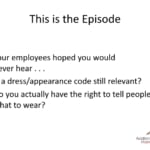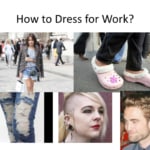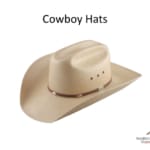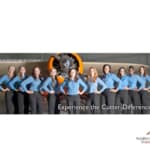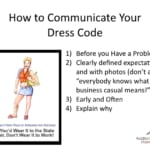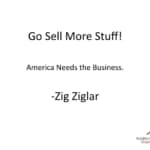Are dress codes effective or relevant anymore? Do you really have the right to tell people how to dress? We talk about all this and more in this week’s podcast.
![]()
![]()
![]()
Transcript – Your Dress Code as Marketing
Narrator: 00:00:08 You’re listening to aviation marketing Hangar Flying, the community for the best sales and marketing professionals in the aviation industry. You can’t learn to fly just from a book. You learn from other pilots, who know the tools, the skills and the territory. Your hosts, John and Paula Williams, are your sales and marketing test pilots.
They take the risks for you and share strategies, relevant examples, hacks, and how-tos. Be sure to subscribe on iTunes so you won’t miss a thing.
Paula Williams Welcome to aviation marketing Hangar Flying Episode 27- Your Dress Code as Marketing. So this is the episode that your employees hoped you would never hear. [LAUGH] Right? Is a dress code and appearance code still relevant and do you actually have the right to tell people what to wear?
We’ll be talking about all this and more today. I’m Paula Williams.
John Williams I’m John Williams.
Paula Williams And we are ABCI and ABCI’s mission is.
John Williams To help all you folks out there sell more stuff.
Paula Williams Exactly so the way that this came about is that we are working with a client and as you know members of our Aviation Marketing Master Class get office hours.
And in their office hours, sometimes what people request us to do is what we call mystery shopping. They say we’d like you to pose as a customer, come to our place of business, either virtually or in person, and see what you think of our sales process. See what’s going wrong.
Often this is to diagnose a problem. And, in this case, we had a situation with a company that had really, really great sales processes, they had lots of leads coming in, they had a very enthusiastic sales forces. Life was really good and they were wondering why Sales weren’t happening the way they were supposed to be so in the process of doing some mystery shopping one of the things that happened, and this is a company that did a lot of sales over the web and video conferencing was part of that sales process.
Now when we got on a video conference with our client’s salesperson one of the things that happens is something that happens fairly frequently on GoToMeeting, people get real casual about GoToMeeting and they don’t really think about how they’re being seen and how they’re being perceived and so this person had us on an iPad and he was carrying his iPad around the house and it was just making us dizzy.
[LAUGH] Do you remember this John?John Williams Yes.
Paula Williams And the way he was holding it under his chin. So we’re looking up at his face, literally looking up the guy’s nose, which was just kind of disturbing. And it’s really hard, no matter how professional his speech is, no matter how well he is hitting all the right points in the sales process, no matter what he’s saying there’s a lot that goes into that.
And he was also wearing a tee shirt and he had not shaved that day, and there’s just some things you gotta do. And it seems like some of that’s fallen by the wayside because we think that we’re protected by technology. We think that we are evolved past the need for a dress code and all those other things.
John Williams And what’s actually true is we’re exposed by technology.
Paula Williams [LAUGH] Yes, that is absolutely true. So let’s talk about an idea called cognitive dissonance in the sales process. And I know this is a really nerdy concept, so we’re going to illustrate this with a really great Dilbert cartoon that appeared in a not too distant past.
So Dilbert’s boss in the first frame, for those of you who are listening, rather than reading, Dilbert’s boss is reading a report to Dilbert, and he says, if your numbers are correct, my strategic plan is irrational. And then there’s a, one of those thought bubbles that says “cognitive dissonance takes over, spoink”.
And the boss says “You sure are bad with numbers” and Dilbert says “What was that noise? “.
John Williams [LAUGHS]
Paula Williams So whenever you have a situation where you have two conflicting sets of data. You know one of which is your assumption. That this person knows what they’re talking about, and they are a confident, professional sales person.
But you have another piece of information coming in, and that is that you happen to be looking up the guy’s nose and he hasn’t shaved, and he’s wearing a t-shirt. Those two pieces of conflicting data will usually give way to the lowest common denominator, right?
John Williams Unfortunate but true.
Paula Williams Exactly, so you put all this work and all this effort into your sales process and yet it’s being torpedoed by the fact that something as simple as appearances is torpedoing your entire effort. So another way of looking at that is mixed messages and you’ve got two street signs, one that says do not enter and the other that says enter only.
John Williams On the same pole.
Paula Williams [LAUGH] Exactly. You have no idea what you’re supposed to do and so whenever you’re confused, you do nothing. Or you default to the safe option. Confused customers don’t buy.
John Williams No they don’t.
Paula Williams Absolutely, so we need to make sure that we’re sending a very clear message and that all of our advertising, all of our marketing, all of the hard work that we’re doing in the sales process, and everything else is supported, rather than undermined by things like the dress code.
So, another thing that’s really interesting about the aviation industry is aviation people are very visual. To succeed in the aviation industry they’ve had to learn how to process a lot of visual data very, very quickly, often without even thinking about what they’re looking at consciously. It just becomes a natural part of the way people’s brains work.
If you’re looking at a six pack display, if you are scanning the horizon, there’s a lot of visual tasks that they become really, really good at. Right, John?
John Williams Yep. [LAUGH] Like one of my instructors told me, you’ve either got to speed up your cross-check, or slow down your hands.
Paula Williams All right. So, they process a lot of visual information very, very quickly, and that includes the way someone looks, the way someone acts, their mannerisms, what they’re wearing, and all of those things. Another weird thing about aviation, or different, anyway, a unique thing about aviation, we have a higher than average number of former military people and military people tend to care what people wear.
Right John?
John Williams Yes they do. It doesn’t matter whether you’re enlisted, if you stayed in long enough to move up the ranks, or if you’re an officer. The way you dress is imminently important when you have a meeting.
Paula Williams Absolutely. And if, John spent some time at Fort Hood where he had to wear a uniform all the time.
And they had a lot of people in the town around Fort Hood that were experts at assembling uniforms. And that’s what they did. They sewed the patches on in the right places and these people would measure within an eighth or a sixteenth of an inch just to make sure that everything is exactly perfectly lined up.
Just because the visual-
John Williams It’s closer than that. It was exact.
Paula Williams [LAUGH] It was exact. Everything is so visually important to military folks and it becomes part of the discipline, part of the code of things that are communicated by a persons uniform. So there is a lot that goes into that and a lot of these people are coming from that kind of background and then they are getting into a meeting with your 20 something year old sales guy who may be doesn’t have the same background and doesn’t understand the importance of this.
We’re not saying that people are sloppy. We’re not saying that people are horrible. We’re just saying that there is a level of awareness that needs to be raised here.
John Williams You should dress for your audience.
Paula Williams Exactly.
John Williams That means you have to know their demographics, where they come from, what they — the way they dress in their own offices and the clientele that they have.
Paula Williams Absolutely. That’s correct and that means if you’re going to a casual event you should dress casually. But in a very neat, casual way that emphasizes the most positive characteristics of your company. So if you’re very detail oriented, if you tell people that you’re concerned about quality, if you are expected to be taking care of people’s airplanes, they’re expecting a level of attention to detail.
That has to be communicated in every way you can, get that message across.
John Williams Some would argue with me, but I’m going to say that the way you dress is indicative of the way you run the company.
Paula Williams Right. And another example of this, one of our kids was in Tae Kwon Do for a long time, which is a Korean martial art.
And he actually taught Tae Kwon Do to little kids. And he had to teach these little kids and their parents most of the time how to dress, in fact how to wear a uniform, and the fact that you have to wear a uniform. And it has to be clean and it has to be ironed and it has to be worn properly.
And if you don’t do all of those things, you won’t be allowed in class. And he was sending kids home for not wearing a uniform. Now did this Tae Kwon Do studio lose business to the people down the street that maybe weren’t so strict? Potentially, but it also was the most expensive and the most competitive, most effective competitively, most what is the word?
[LAUGH] They won the most tournaments.John Williams Most desirable.
Paula Williams Exactly. They won the most tournaments and part of that was the discipline of making people show up in uniform. There is something about showing up in uniform, and Mickey explained this to the kids and explained this to their parents.
That if you’re showing up in a clean, pressed, perfect uniform, you are ready to go. You have prepared for the class. You’ve made it part of your routine. You have the discipline to make things happen. And you care enough to convey that. You’re not just phoning in a performance or just kind of thinking maybe you’ll “play Tae Kwon Do” today.
You’re actually part of the team and part of the unit because you’re communicating those ideas.
John Williams Discipline starts with small things so that people know that you have the discipline for the larger things.
Paula Williams Exactly. Now there’s a lot of things that are working against us these days.
In fashion magazines, there’s a picture of a young lady who is, and this is actually how to dress for work, [LAUGH] in a fashion magazine. And it shows a young lady in cut-off Levi shorts with pockets hanging out the bottom, she’s wearing kind of a blazer and an untucked T-shirt, and just looks like she’s dressed for a Saturday-
John Williams In the park.
Paula Williams In the park. [LAUGH] It does not look like she’s dressed for work. But there has been a lot of, I’m gonna call it downward pressure, on dressing up for work. And a lot of that has to do with the technology industry. You know, with Steve Jobs wearing a T-shirt rather than a suit, made that really famous.
A lot of that is, I’m going to say, probably good. Because we don’t have to necessarily do dry cleaning every day. Not every situation is appropriate for a tie. But I think the pendulum swung way too far the other direction and we’ve got people who are showing up for work in things that are really not appropriate and that really do a lot more harm then good.
We’ve got the-
John Williams If you’re losing sales because of the way you dress, or your employees dress, that tells a story right there. Doesn’t matter what you really think or what they think.
Paula Williams Exactly. And this is not easy, okay. We know there’s movies and all kinds of things going on in the world that portray the half-shaven or unshaven look as being glamorous.
The last Hunger Games movie had this young lady with half of her hair shaved off. It was really, I guess, hip and chic and all those kind of things. But we’re really not here to make a fashion statement, we’re really here to do what’s effective. And we actually had a young lady that worked for us that does mail for us and I like her a whole lot, she’s a very young person, come to work with half her head shaved and purple hair one day and a nose ring.
[LAUGH] And I was at a loss because I was completely unprepared for this. I wasn’t expecting to have to have this conversation with somebody that had, up to that point, been really professional looking, and she did fantastic work. And I really like this person a lot. And I really was not sure how to handle the situation because we didn’t have a dress code.We never thought we needed one because most of our folks are part time or contract folks. And they don’t really come face to face with our customers. But that was the point at which we decided that we really do need to have a dress code. And it’s only fair to us, and to the people that work with us, to say, you know what, here’s the circumstances under which we’re going to have a say in the way you dress and what you wear.
And those are if you have interactions with clients, if you go to trade shows representing ABCI, several other things, then here are some basic guidelines for what is and is not okay.
John Williams Yeah, I mean, if you’re gonna go sell marijuana in Colorado.
Paula Williams [LAUGH]
John Williams Then whatever the demographic is then dress for that.
Paula Williams Yep.
John Williams But if you’re gonna be selling airplanes or stuff for airplanes, people in aviation typically don’t dress like that.
Paula Williams Right, our target demographic is generally a little more conservative than some of the examples that you’re seeing here. The torn jeans, the unshaven face, the Crocs, those plastic shoes, it just is not the right message that we want to send to these kinds of folks.
So let’s talk about the message that we do want to send. Of course, if you’re in an FBO or you’re running an FBO, there are some specific things that you have to do. If someone’s on the ramp, there’s some safety protocols, the closed toe shoes. Sometimes there’s the metal tip shoes.
John Williams Steel toed shoes.
Paula Williams Steel toed shoes that are required. So there’s some safety protocols that you have to work into your dress code. But for the folks in the office and other kinds of things, you wanna make it comfortable and you wanna make it workable. So that they can get around, get their jobs done.
Maybe you don’t need to have an enormous dry cleaning bill, but you should be able to get their jobs done and look smart, and look like part of the team, and make it obvious who your employees are.
Paula Williams So, that’s if you’re running an FBO. If you’re running a maintenance shop, there’s been a trend in recent times towards these novelty T-shirts.
We’ve got one on our slide here that says “Aircraft Maintenance: Caution flying tools and obscene language is more than likely.” And if you’re working on your own plane, then those are funny and those are great. We think they’re cool, but in most cases, people who take care of other folks’ airplanes, we want to see them in some kind of a uniform.
We want to see them looking clean, looking like they have attention to detail, and like they take pride in their job. So, shorts are probably fine, especially if you’re in a really hot climate and things like that. But ironed shirts with the nametags, those are really I think smart and make a lot of sense in most cases.
They have uniforms provided so that you take care of the laundry and you make sure everybody’s got clean uniforms all the time, so. When you take your airplane into the shop somewhere, you’re looking for something pretty specific. There’s some things that make you feel more comfortable about that.
And there’s probably things that make you feel uncomfortable, right, John?
John Williams Yes. Taxi into a hangar or move it into a hangar with the guys. And I want to see that hangar sparkling clean and the people that are going to work on my airplane looking sharp and clean, knowledgeable.
Paula Williams Mm-hm. Clean-cut. Is that important?
John Williams Yes.
Paula Williams And that’s a different expectation than you have when you take your Harley into the Harley shop, right?
John Williams No.
Paula Williams No?
John Williams [LAUGH]
Paula Williams Well, those guys have tattoos and have beards.
John Williams Well yeah, but there’s a difference. Tattoos are one thing.
I don’t even worry about that, but they are clean cut. The shop is spotless.
Paula Williams Yes. That is true. Some of these things may be a difference of opinion and a difference of demographics, so, you can make your own decision about tattoos and piercings and other kinds of things.
I think uniforms and cleanliness are pretty universal, what do you think?
John Williams Yep.
Paula Williams All right. Okay, and then professional services. If you are selling insurance, legal services, tax services, consulting of any kind, marketing like we do, other kinds of things like that if you’re a broker. Then business attire is still, or at least business casual attire depending on the situation and the setting, is still pretty much the word of the day for aviation folks.
In fact every aviation conference I’ve ever been to has been formal business dress as far as the coat and a tie. The plain shirt, the business shoes, the whole nine yards. So, I think almost more than any other industry and we worked in finance, we worked in education, we worked in some pretty traditional industries and I think aviation is probably one of the more conservative.
Wouldn’t you say?
John Williams Yes, IT used to be, but I think is less than it used to be now.
Paula Williams Yeah, I think Steve Jobs kind of threw a wrench in that one.
John Williams Even towards the end, he was dressing up in turtle necks and looking sharp.
Paula Williams Yeah, that’s true. He was kinda conceding to some of his objectives. He wanted to achieve his objectives almost more than he wanted to convey his style, and his rebellious streak mellowed a little bit. But there’s two things, one aviation is international. So if you’re doing business with European people, Asian people, and other kinds of folks, their dress standards are often stricter than ours.
So if you are in a situation like at a conference where there may be international people there, you want to make sure that you’re dressing in a way that they’re not going to be negatively effected by what you’re wearing. And then the other thing, of course, is the trust factor.
You have a higher than average number of decision makers who are 35 and older, male, you said a lot of them have military experience and things like that. So all of that really adds up to a more traditional style and there’s nothing wrong with that. And this really isn’t about what you like personally this about what happens to be effective.
So you can think of this as a uniform really.
John Williams Sure, I’ve worked for IBM for a few years and I worked in IT and at IBM you wore a suit, coat, tie.
Paula Williams Mm-hm.
John Williams It’s just the way it was. You get used to it and you felt uncomfortable when you weren’t in it.
Paula Williams Mm-hm, exactly. So a lot of flight attendants, these days, they’ve had some downward pressure on their dress codes as well. So you know a lot of them have been wearing sweaters rather than a jacket. A lot of them have been wearing pants rather than skirts, and all of that is fine.
But you’ll notice there’s a different trend among some, I’m gonna say probably like the UAE, the Emirates flight attendants are very dressed up. Virgin Airlines flight attendants are very dressed up, in fact there was a recent article that I saw bout a Richard Branson and his insistence on the patent leather heels.
And this particular shoe, if you’re seeing our show notes, this is the Virgin Airlines red patent heel, which is available through Zappos for $375 I think. So it is expensive. They’re willing to spend the money on nice shoes. There’s lots of reasons for a flight attendant to be wearing flat shoes, but-
John Williams Just as many, if not more reasons for them to be wearing heels.
Paula Williams Exactly. If you’re thinking from a marketing perspective, if you’re trying to differentiate yourself. If you’re trying to associate yourself with kinda that old school glamour or that old school service, then there is nothing like a heel [LAUGH] to really convey that.
And I think they’re taking the chance on the fact that there are going to be some flight attendants that won’t work for Virgin because they don’t wanna wear the shoes. And, that does disqualify some people who maybe have a different attitude towards service than what they’re looking for.
All right, so also, I think Cutter Aviation is a great example. They do a really nice job of always showing up for trade shows and other things looking like the Cutter Team. They always look like a team. Whatever they’ve decided to wear, they all do it to the hilt.
At some shows they do the, of course they’re based in the southwest so they sometimes do the cowboy hats, the cowboy boots, the jeans, and all that. So anywhere that they go during a conference you can tell that’s the Cutter Aviation guy, or there goes the Cutter Aviation team.
Or if you’re sitting in an event where there’s a lot of folks sitting around in a general assembly or something like that, you can see where the cutter guys are. They’re really, really obvious and really professional at the same time. I think they do a nice job of combining those two things.
So, Glenn Shepard, he has the blog Work is Not for Sissies and he has a pretty good poster and a pretty good dress code, I think. He explains it really well. He says if you’d wear it to the state fair, don’t wear it to work.
John Williams [LAUGH]
Paula Williams And he actually sells posters that look like that.
Glenn’s first rule of dressing for success. So what you really need to do with a Dress Code is you need to decide before you have a problem so you don’t get caught unawares like I was. You just assume that everybody knows what business casual means. You want to make sure you’ve clearly defined expectations and everybody knows what that means.
You wanna explain early and often, and you want to explain why. So this is not because we want to control what you do after work, this is not because we. Think you’re a terrible person, or any of those things. This is because this is the way we want to communicate to our customers, and these are the core values that we need to communicate, and this is the way that we are not sabotaging our message in the process.
So if you have some illustrated dress codes and I’ve put some examples of this and there will be some links in the show notes to one resource from the Business Insider that shows executive casual business casual, and some other types of dress codes that you could either. Just adopt and say this is gonna be our dress code.
Or you could take parts of those and say, this is fine, but tattoos are also fine. Whatever your situation is, you wanna make sure that you define that before you have a problem and introduce that in a way that applies to everyone. And you’re gonna have to comply to it yourself, if you are the boss, because you can’t expect your folks to do what you’re not willing to do yourself, right?
John Williams Well you are the boss.
Paula Williams Well, you are the boss. Exactly, no but if I’m meeting with employees and I’m not meeting with clients, I will still adhere to our dress code because I have respect for the people that work with us. You know, so, I’m going to do for them what I expect them do for me and I expect them to do for our clients, so, you know that’s a two way street.
Here’s another one. This one is from Washington State University. They’ve got a pretty illustrated dress code of Here are some examples of what is and isn’t acceptable in different environments and things like that. So, a lot of us are using webcams. So let’s take a minute and talk about how to look good on a webcam.
[LAUGH] John, you’re our technology guy. So We have a guy on the left, and a guy on the right.John Williams Disregarding that, the first thing you do is dress like you’re going to a business meeting face to face.
Paula Williams Exactly.
John Williams Doesn’t matter if you’ve got a home office or just a private office, if you’re going to be in a meeting of any kind where somebody can see you, you should be dressing as if you are going to go and talk to them person to person in a meeting.
Paula Williams Exactly, everything that they can see should be a professional environment. So in our show notes we have a visual here of a guy on the left in a t-shirt where the light from his computer’s reflecting off his glasses.
John Williams And the light is behind him instead of in front of him.
Paula Williams Yes, and lighting behind him. He’s got a bunch of shelves and it’s very cluttered. And then on the right, he’s got a backdrop behind him. He’s sitting in an office chair. He’s wearing a button down shirt, it just looks 1000 times more professional. He’s got lighting from the front.
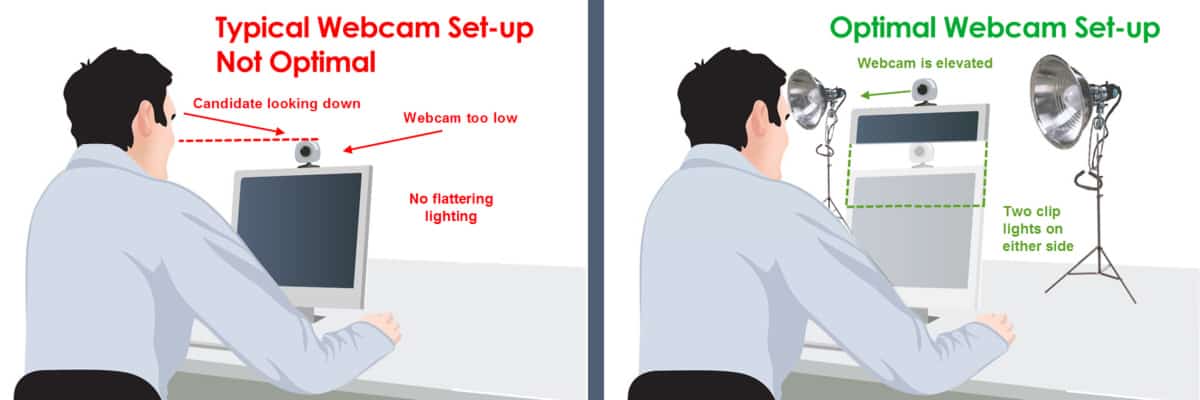
https://www.graduate-jobs.com/gco/Booklet/video-interview-guide.jsp
John Williams And you’d be surprised how many people don’t understand. They do it time after time. With a light behind them and we say, you finally say is that what’s causing that?
Paula Williams Exactly.
John Williams They just don’t know. It doesn’t work into their conscious effect of what’s going on.
Paula Williams Exactly, so if you do appear on a webcam on a regular basis then you want to look around your office or look around your conference room or look for a place where you can have a nice backdrop where you can have the light in front of you or in front of you and behind the camera.
And we can put some diagrams on the website to kind of illustrate how this is done. But you also want to make sure that you take care of your grooming. People can see if you’ve shaved or not, people can see if you’ve done your hair or not. You want to look at what’s going to be showing up behind you.
And if you’re gonna be walking around your office, If you wanna turn your webcam to show somebody something or things like that, you wanna think about that ahead of time. So that you’re not showing them a really messy office or a bunch of boxes or something that looks unprofessional.
Because if you are conveying the idea that you are a professional, detail oriented person and yet you’re not paying attention, that doesn’t help your message at all.
John Williams You really shouldn’t move the camera unless you’ve got one that has electronic panning on it.
Paula Williams Exactly. All right so lets talk about social media and other types of photos.
And we’ve got a several examples you know. And you can use different pictures for different things. So you know you’ve got casual pictures,you’ve got snap shots, you’ve got professional pictures. And a so we kinda wanna talk about where and when you wanna use each of those things. So, informal pictures, snapshots showing you in action, showing you near your airplane.
showing you, in my case, I use speaking photos for some of our social media photos because I wanna get more speaking gigs. So, you want to show yourself doing what it is that you that you do for a living because that improves your credibility and so on. But, as a profile picture, you often want to have that be a more professional photo, with good lighting.
You know, you can really tell the difference between a professional photo and a selfie or a really informal photo. And there’s a place for both.
John Williams Unless you get lucky. I got a picture of her when we were in Paris In the April one year, and it came out perfect.
Paula Williams Right, and I’ve used that on some of the books that we’ve written and other things, because it is a good picture. And it does convey a certain feeling that we sometimes want to show, and you know if we want to have a more informal setting for, a more business causal kind of a feel then we use that one.
if we want to do something more buttoned up we got some formal photos for press releases and other kinds of things. We’ve also got some pictures of John in the cowboy hat and so on and us in In Utah, to kind of show this is where we live.
We’ve got pictures with Charlie and Whiskey, with our 172. So, you know, those kind of give people a better indication, make them feel more like part of the family, part of what we do. So, there’s good times and places for all kinds of photos, but for your profile photo for LinkedIn, I think it’s really important to have a professional photo.
Don’t you think so, John?
John Williams Absolutely.
Paula Williams Yeah, you want people to be able to see you really well so that they would be able to recognize you when they saw you again at a conference and things.
John Williams Which is the most likely place you’re going to meet them.
Paula Williams Which is the most likely place you’re going to meet them.
John Williams Or in a sales colony. Either case, you’re going to be dressed.
Paula Williams Exactly, so you want to be really recognise the bullet dress plans and you want that to be a reassuring photo conveying the fact that you’re a professional person and you’ll take very good care of them and their airplane and their needs and their everything else.
So that’s why you are communicating with your appearance. All right, so we do have a free tip sheet, a LinkedIn tip sheet, that includes some tips and pointers on your profile photo and how you want to use that to your advantage and things like that. So, do make sure that you download that.
If you would like some more assistance with personal branding, mystery shopping, any of those other kinds of things. Feel free to give us a call at 702-987-1679 or you can check us our on our website. Our aviation marketing master class, that does come up pretty often as mystery shopping, as solving sales problems.
As how do I solve this dress code problem and other kinds of things. We’ve got very smart people in the class who have run into these kinds of things before, so you’re not alone. And you don’t have to face the uncomfortable task of talking to your employees about your dress code by yourself.
There’s lots of resources out there that will help you do that in a way that’s not gonna be confrontational or horrible, so go out there and sell more stuff. America needs the business, right?
John Williams Yeah Zig Ziglar.
Paula Williams So Zig Ziglar’s saying that it is still very much applicable right?
John Williams Everyday.
Paula Williams Everyday. Subscribe to our podcast and please do leave a review. See you next week.
John Williams See you next time. If you get to this point and you’re editing. You’ve going to far.
Narrator: 00:35:17 Thanks for joining us for aviation marketing Hangar Flying. The best place to learn what really works in sales and marketing in the aviation industry.
Remember to subscribe on iTunes and leave a rating.
[MUSIC]
} else {..
Podcast: Play in new window | Download
Subscribe: Spotify | Amazon Music | RSS



